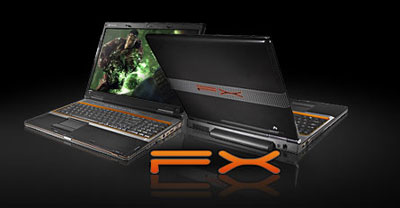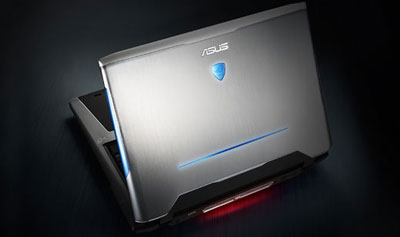Conclusion
Laptops are one of the fastest growing markets, and it won't be long before mobile PCs begin outselling desktops. There will always be a need for grounded PCs - servers for example wouldn't work well if the admin accidentally carried it home one day - but many people are turning to laptops as a viable alternative to a desktop. This is hardly surprising, considering most applications outside of gaming and high-end computing rarely come close to taxing even a two or three year old PC. With the laptop boom come many choices, and hopefully this guide has provided a bit more insight into what options might make sense.
Putting together this laptop guide ended up being far more difficult than we imagined. Part of the difficulty is that at every price bracket there are numerous options to choose from, all of which make sense for a certain market segment. Some people care most about size, weight, and battery life while others prefer raw performance. This has led to something of a nebulous guide in terms of specific recommendations, influenced by the fact that researching the current offerings from a reasonable number of major vendors became extremely time consuming. Plus you have some large OEMs that separate their laptops into several areas (i.e. home, business, and enterprise), so it's little wonder that we have missed some laptops that are almost certainly equal to the models we explicitly mentioned.

While we may not have reached too many concrete recommendations, we did manage to come up with a pretty good feel for the market, and certain vendors repeatedly showed up in our list. One of the more surprising companies is Gateway, who have some stellar values at everything from the budget through the midrange options. Gateway may not have the best reputation in the industry, but they seem to be making some very aggressive moves into the mobile sector. Not so surprising is that Dell and HP also have plenty of good values, particularly if you steer towards the preconfigured models. Another familiar face is Acer, and though they now own Gateway they continue to sell their own brand of laptops, with a heavy presence on e-tailer sites.

ASUS is making a lot of waves in the budget laptop market with the Eee line, but there are other reasons to consider an ASUS laptop. One area where we have to give ASUS credit is that you can actually purchase replacement parts without breaking the bank. Recently, I had a fan fail on a Gateway laptop that's out of warranty; the best price I could find for the fan unit is $60, and Gateway offered to repair it for $400 if I shipped it to them! Compare that to the $80 I spent to replace the entire casing on an ASUS notebook that was cracked - the hinges wore out, and a few accidental bumps and bruises certainly contributed to the damaged casing. (As a side note, the ASUS CPU fan would have cost $10.) The reason for the price discrepancy is that ASUS has an online store where customers can purchase replacement components, even for laptops that are out of warranty; it would be great if that were an option for other notebook vendors. ASUS also provides a 2-year global warranty on their normal laptops (i.e. not on the Eee), and will pay for 2-day shipping both ways. That may not be as convenient as an on-site warranty, but it's better than paying to ship your laptop out.

The last company that we want to mention is AVADirect. They may not have as extensive a selection of laptops as some of the largest OEMs, but they do have a large number of Intel offerings as well as a few AMD options. They specialize in "whitebook" options, with designs from Clevo, Compal, MSI, ASUS, and Twinhead. What sets them apart is that they offer extensive component choices wherever possible. If you've ever thought it would be nice to build your own laptop the way you can easily build a new desktop, AVADirect comes pretty darn close to doing the dirty work for you without eliminating choice, and they do it at a reasonable price.
Besides all of the features and options to sift through, one area that most customers neglect is the warranty. I posted a blog on this topic a while back that laptop buyers might want to read. Many of the recommendations in the $1000 and above price range mention manufacturer warranties; certainly if you buy a $3000 laptop you should probably get a 3-year warranty. Frankly, we're a little disappointed that the high-end laptops don't all come with at least a 3-year warranty; you'd think that a boutique vendor would use that as one area where they could show a clear advantage over the bulk OEMs. Instead, if you're looking for decent laptops that come with a longer warranty that won't increase the price by several hundred dollars, look at some of the preconfigured business laptops at the major OEMs.
To wrap things up, we know many of you would really like to see some benchmarks to go along with all of the talk. We can try to tell you how much faster or better a midrange notebook is compared to a budget offering, but without concrete numbers things can become murky. We're hard at work benchmarking six laptops, several of which made an appearance in this buyer's guide, plus we have results from previous laptops we've reviewed. While we can't cover every option we should at least be able to provide a better answer to the performance and battery life questions. Stay tuned….










28 Comments
View All Comments
theoflow - Wednesday, August 20, 2008 - link
I know this is pretty much covered in the first line of this article, but I'm dying to see the new desktop system build guides.I've been out of system building for about 3 years and I'm somewhat clueless as to what direction I should go.
ARG!!!
LOL
Rekonn - Sunday, July 27, 2008 - link
"we understand the P-6860 is scheduled to be replaced in the future by another slightly upgraded model"Anybody know details on this?
JarredWalton - Sunday, July 27, 2008 - link
Yes but it's under NDA. I can tell you next month, and trust me you'll be impressed (again).Rekonn - Tuesday, July 29, 2008 - link
Sweet, looking forward to it.Rekonn - Monday, August 4, 2008 - link
Think I found it, the Gateway P-7811 FX. Available on August 14th for $1500.http://laptopcom.blogspot.com/2008/08/gateway-p-78...">http://laptopcom.blogspot.com/2008/08/g...y-p-7811...
Now, how much better is a 9800GTS vs an 8800 GTS?
JonnyDough - Saturday, July 12, 2008 - link
I have a hard time with believing that the "mid-ranged" notebooks are between $1500 and $1750. It's like you pulled these numbers out of thin air and you neglected the $1K-1.5K segment altogether. $1K is where a decent modern laptop starts. Anything pushing $1500 is too much for many people to bother spending, while $1K is about right. I just got a Dell flier, the multi-page one with desktops in it too. The majority or main line notebooks start at $999, like the Inspiron. Granted, you can add options for a hundred here or there, but the starting price is $999 on a few different lines of their notebooks. I would have to say that this is the "mid-range" as they show a $999er right on the front page. You can shop NewEgg and find decent laptops that are older processors and so on for $500ish. So saying that $1500-$1750 is "mid-range" is complete bullocks. Mid-range is the budget minded market segment that wants something just a bit better than the bare minimum and it's what Dell caters to and always has. The mass market. Mid-range = mass market. Period. There's no argument against it. Budget does not = mass market. Budget = budget = those that have to watch every dollar. Remember mainstream America? Remember those that pinch pennies but still go to the fair? Yeah, us. The middle income folks. The majority of America does not live in poverty, yet. Thanks.JonnyDough - Saturday, July 12, 2008 - link
Eek! They edited the article right after I posted. LOLJarredWalton - Sunday, July 13, 2008 - link
Um... no, we didn't. I had budget, then Entry-level, then Midrange, then High-end, then Dream since the beginning. As I mention in the intro, the price brackets are indeed somewhat arbitrary with plenty of overlap. I may call $1000 "entry" and $1500 "midrange", but regardless of the name I did my best to cover all bases from $300 up through $5000. As I mention on the Entry-Level page, $1000 will get you a LOT of laptop, and unless you want gaming (i.e. Gateway P-6860) a lot of people can stop right there - give or take $250.Jjoshua2 - Saturday, July 12, 2008 - link
I think the 6-cell Wind is pretty cool. I pre-ordered one from buy.com and I was able to use a coupon that got me $15 off. Now I just hope it will get in-stock soon.fabarati - Saturday, July 12, 2008 - link
Besides warranties, this article lacked Two major points that are often overlooked - and one not quite as oftenly overlooked -when shopping for laptops: Build, Screen and Battery.Build quality is very different from laptop to laptop. Generally business lines are better built than consumer lines, which are better build than budget lines. There are laptops that are built better than consumer laptops, but worse than business ones, etc. That's why a same specced Thinkpad T61 is more expensive than a HP DV6700 (typical consumer build quality) or any acer (crappy budget build). Or why a an XPS m1530 is a better buy than an Asus M50/51
Screen is also overlooked. Nearly all laptop screens are horrible compared to desktops. They're all TN screens. The very, very best are at about desktop mid-range TN's level.
Batterylife depends on more than just what specifications a computer and the battery has. It also depends on ACPI and bios coding, and what and how good the batterysaving applications that come with are. Almost ny new Asus (Santa Rosa or newer), with a few exceptions like the U2e, has horrible batterylife. Some have a hard time reaching 2 hours under normal usage.
Then there are some small stuff that nagged me about this article, mainly performance things. Whilst the HD3650/9500m GS/8600m GT/HD2600 are not really powerful, even when not compared to desktop midrange alternatives, they are possible to game on. In fact, you'll get a pretty decent gaming experience, and it'll be portable. They are just usually run on lower resolutions (because many laptops they're in have lower resolutions) and lower (medium) settings. The fact that they can't run a game on all high does not make it un-gameable.
Anywho, you guys didn't do too many mistakes, and had some Ok recomendations. Pretty good for beginners.